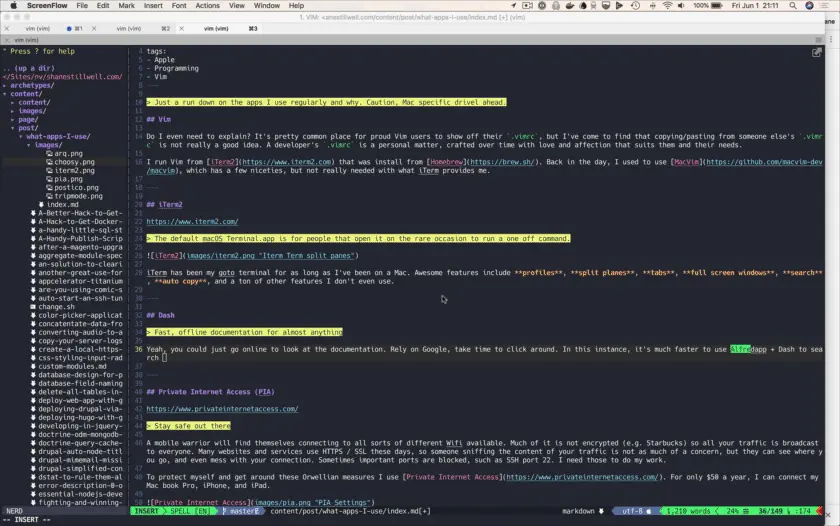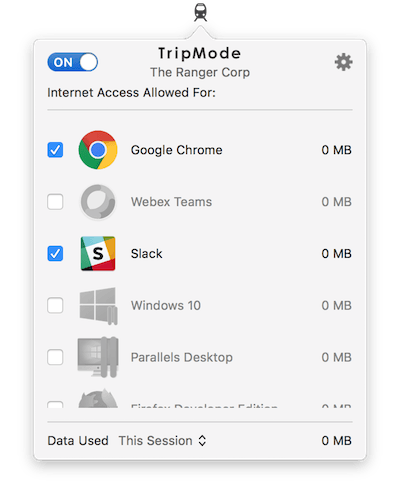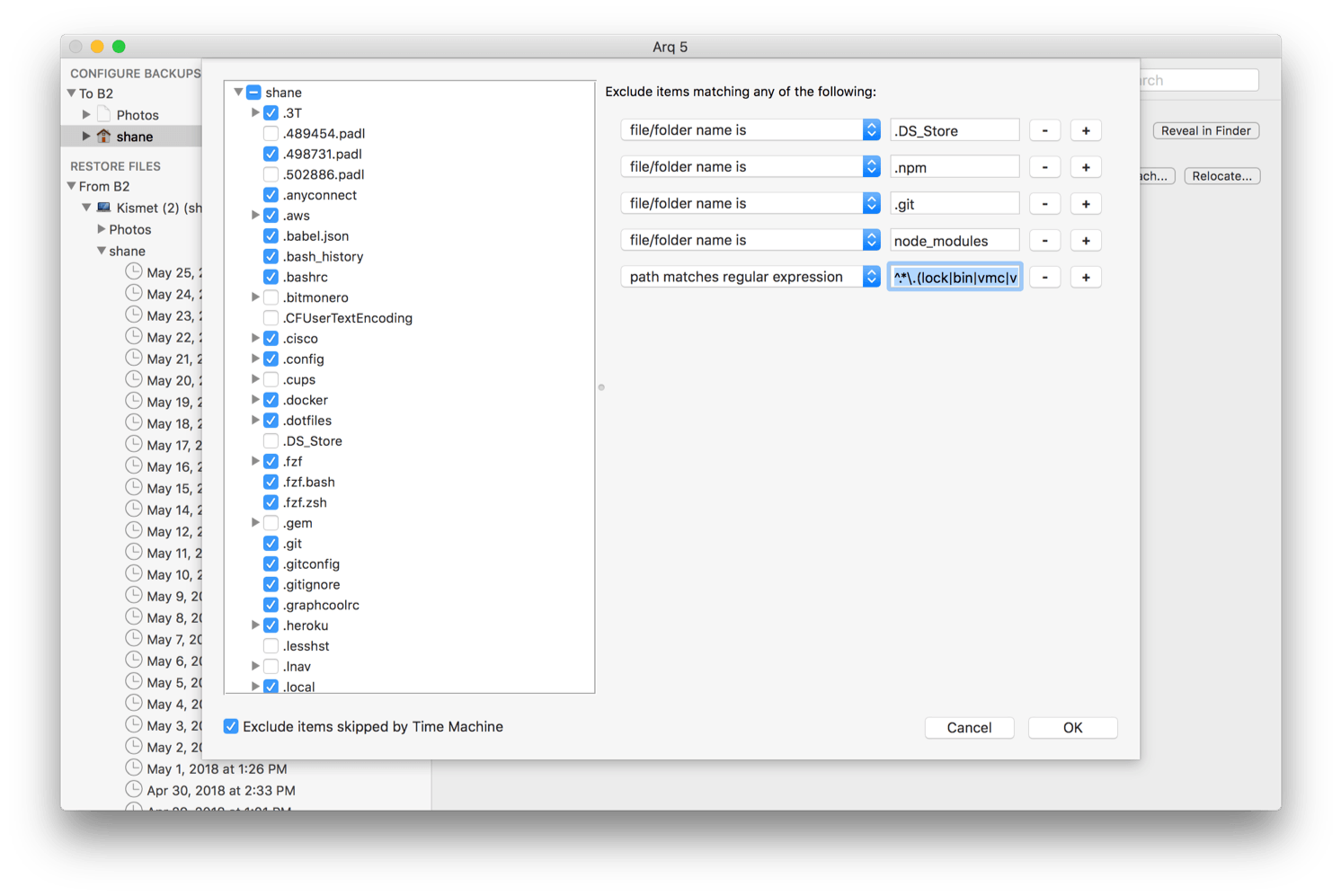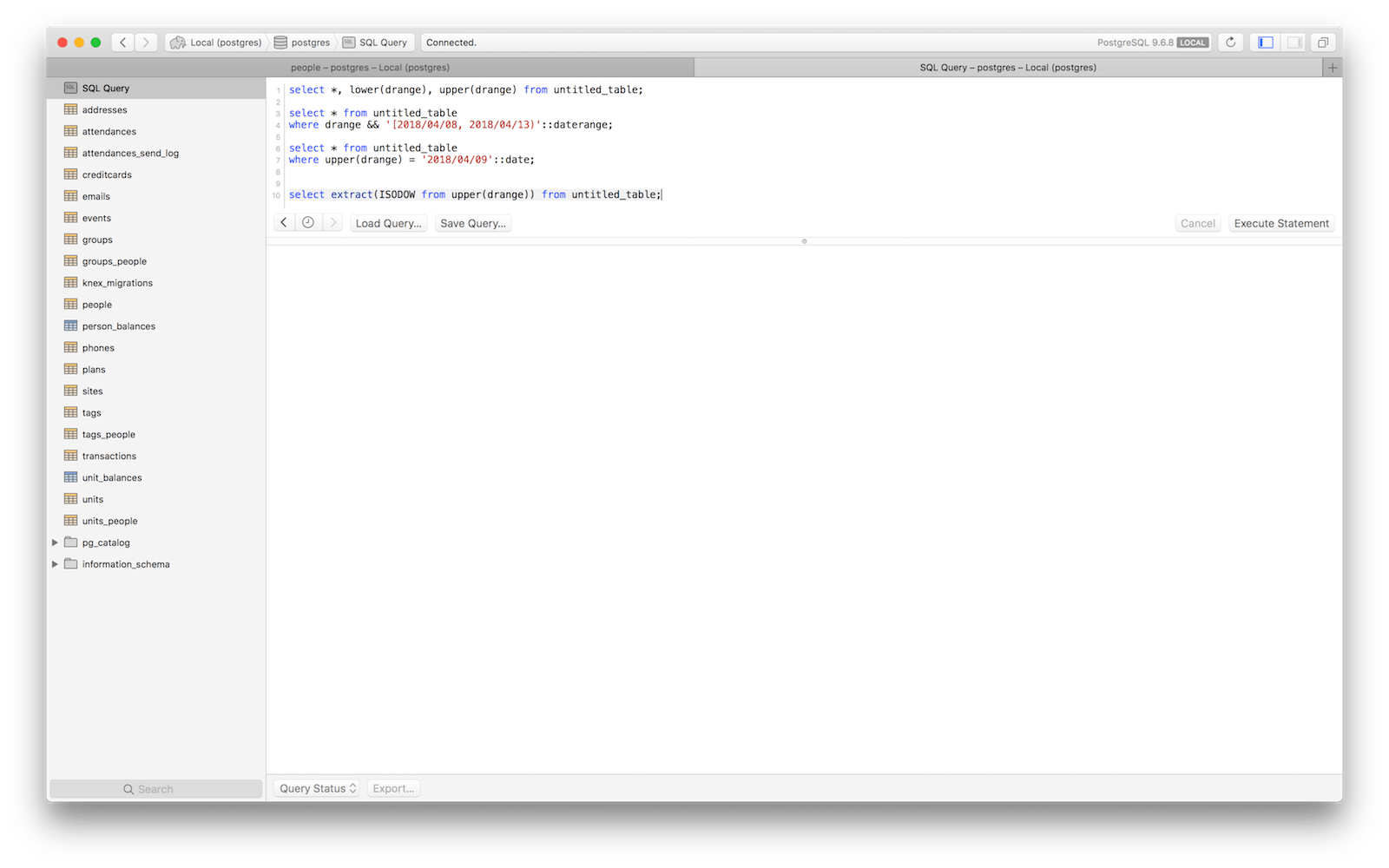
Apps I use and may be useful to you too
A run down on the apps I use regularly and why. Caution, Mac specific drivel ahead.
NeoVim
Do I even need to explain? It’s pretty common place for proud NeoVim users to show off their .vimrc, but I’ve come to find copy/paste from someone else’s .vimrc is not really a good idea. A developer’s .vimrc is a personal matter, crafted over time with love and affection, it suits them and their needs.
In the last few years, I’ve really liked all the work Sidhanth Rathod has put into NVChad. It’s elegant, fast, plugin ready, and more. I have no problem keeping up and surpassing all the bells and whistles you see in VSCode and their ilk.
I run NeoVim from Warp.
Warp
https://app.warp.dev/referral/26WLR6
The default macOS Terminal.app is pretty much useless, and iTerm looks like something from 2001.

Warp replaced iTerm a while back and haven’t missed it. Warp supports full copy and paste, Vim bindings in the command line, built in AI for generating commands and it just better and faster overall. It has built in Workflows and Notebooks for keeping commands handy.
Dash
Fast, offline documentation for almost anything
Yeah, you could go online to look at the documentation. Rely on Google, take time to click around. In this instance, it’s much faster to use Alfredapp + Dash to search for the documentation set (e.g. Javascript, CSS, Redis, Vue, Postgres). Their list of supported documentation is pretty impressive and you can make your own if want to as well, but I’ve never had to.
In this screen cast you see me use Alfred. For instance I would type Ctrl + Space to bring up Alfred, then type java and you see Alfred suggests Dash’s Javscript doc set, so I press tab to autocomplete. Then from there I can type anything in Javascript doc set and it will suggest matches. You see me type array.is and I can get to my documentation very quickly.

Never memorize something that you can look up
― Albert Einstein
Free Alternative: https://devdocs.io/
CloudFlare 1.1.1.1 Warp+ VPN
Stay safe out there
A mobile warrior will find themselves connecting to all sorts of different Wifi available. Much of it is not encrypted (e.g. Starbucks) so all your traffic is broadcast to everyone. Many websites and services use HTTPS / SSL these days, so someone sniffing the content of your traffic is not as much of a concern, but they can see where you go, and even mess with your connection. Sometimes important ports are blocked, such as SSH port 22. I need those to do my work.
To protect myself and get around these Orwellian measures I use 1.1.1.1. For only $4.99/month, I can connect my Macbook Pro, iPhone, and iPad and the traffic from my computer to their VPN is encrypted and escape the prying eyes of your ISP and other net neutrality issues. Now the NSA can’t track your nefarious activity online. At least that is the idea. Maybe it’s just a pipe dream and everything I do is easily thwarted by the NSA 🤷.
Pros
- Can use one account and connect multiple devices
- Verify flexible connection options (i.e. you can make it look like you’re making a lot of traffic to some website)
- Easy to disable temporarily if I need to
Cons
- Many captive portals have blocked access, making it hard to connect sometimes.
- The network is slow or times out sometimes. That’s when that Pause for 15 minutes comes in handy.
- Cannot pick the location / country of your VPN server.
Choosy

I stumbled upon this little Preference Pane app a little while back when I wanted to open various links in different browsers for reasons I forget. It’s a paid app ($10 at the time of this writing). It’s pretty simple, Choosy becomes your default browser and when you try to open a link in email, or any other app, it’ll prompt you which browser. It’s both nice and annoying. Sometimes I’ll forget once I click a link, I also have to click the browser icon (remember the days of double click 👴)
TripMode

This little gem is handy when you want to limit the traffic on your hotspot. For example, if you don’t want backups happening on your hotspot or if you want to limit something otherwise would suck up the network. The one problem I always have, if I have it on, I forget I need to enable each process to access the network. This means I’ll be scratching my head wondering why something didn’t work (in fact it happened right now while writing this and wondering why I wasn’t getting messages through Cisco Teams). I’m my worst enemy.
As an added bonus, you can spy on processes using the network and possibly deny them.
Arq
Offsite Backups
I’ve tried them all, Backblaze, Crashplan, and Carbonite. All of them work fine, but my biggest rub was security. These are my files, and I want them encrypted before they are sent offsite, and only I hold the key. Backblaze does a good job at this, but they fall flat on their face when you want to restore a file, you need to give them the encryption key 😮.

Pros
- Backend agnostic, feel free to store your files on S3, Azure, Backblaze B2, and more.
- Encrypted before sent off to remote server
- One fee for the software
- Can decide which WiFi networks to use (or not use)
Cons
- Searching for files currently sucks. You need to know the exact file you want to restore.
- In my opinion, the algorithm for including files is a little flawed. For example, if you include your
~/HOME directory, and exclude some items from the HOME directory, say for example~/.npm. The problem comes when a new file/folder is added to your HOME directory, it’s automatically included in backups. I can see this being bad either way. You’re either going to say “Hey, I don’t want that folder backed up, but it automatically added it”, OR “Shoot, I thought that was being backed up”. - I know I listed excluding wifi as a pro, but the problem here again is a flawed algorithm. If you select to exclude some wifi networks (like your tethered phone), then any new wifi will also be excluded by default. I know, I’m hard to please.
TablePlus
A simple Postgresql GUI
I know the real PG pros use psql for all their PG queries, so I guess I’m not pro. TablePlus is a paid product, but worth it IMHO if you are doing plenty of SQL queries a day. It supports tabs, which is great for keeping track of values in different tables. I like the SQL editor, it has autocomplete, plus it’s really handy to paste in queries.

Pros
- Have a ton of saved PG servers you can connect to saved as favorites (color coded too)
- Auto populates the connection details from a
postres://...connection string in the clipboard, cool - Multiple tabs
- TablePlus has guards in production to confirm every SQL submission. THE KILLER FEATURE.
Cons
- Is mostly used for Postgres usage, not really for permissions or administration
- Can’t easily see functions, triggers, or other more hidden features in a DB
DropShare
Share files using your own storage provider
Keeping with the theme, I like to be in control of my data, I found Dropshare a few years ago and have really enjoyed using it to share files, screen shots, and screen recordings. I’ve found being able to share screen shots quickly is paramount when working remote.
Best of all, I can upload to S3 and use a domain I own in Route53, then utilize CloudFront + SSL. What am I talking about? You should check out this post I made setting up S3, CloudFront, SSL, Route53. Check out these links I used Dropshare to create.
Honorable Mentions
Most of these are covered elsewhere or are in fact no-brainers.
- RayCast Launcher, search, clipboard history, and much more. If you’re still on AlfredApp, give Raycast a try, you wont regret it.
- Notion Better than Evernote, can handle many different data types. Awesome.
- Clean My Mac Nice for cleaning up your Mac.
- ScreenFlow Profession screencasting.
- Firefox: Seems to be more secure/private than Chrome… but have slowly switched to Brave since FF is losing the browser wars.
- Docker for Mac Docker ALL. THE. THINGS.
- Harvest Time tracking.
- Fantastical I’ve used it for years, handy.
- Fastmail I’ve used it for years, it’s good old fashion email done right.
- 1.1.1.1 Warp I used to use PIA, but I like CloudFlare. Only caveat is not being able to pick your server location like you can with PIA.
- Reeder on the Desktop and UnRead on the phone. I consume most of my information on the web with RSS. I have an account with FeedBin to sync my subscriptions across devices. On iOS I use UnRead.
- Feedbin Just like you need an email server for emails, you should have an RSS server for articles, to keep them in sync. Feedbin goes above and beyond, for only ~$50/year.
- LanguageTool This is a browser extension that will spell check / grammar check all your text-field / textarea copy. It’s corrected thousands of my boneheaded spelling mistakes.
- Lunacy Free replacement for Sketch and old school Adobe Illustrator.
- Telegram Best messaging app IMHO.